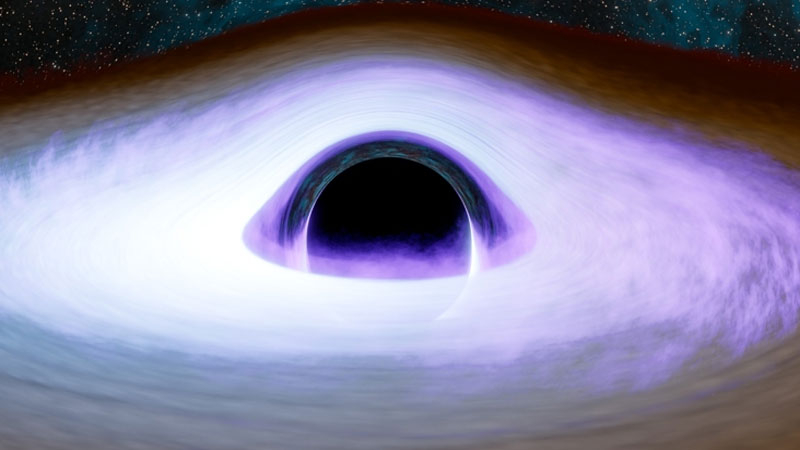During solar eclipses, we see the solar corona – a bright halo around the Moon, obscuring the Sun at such moments. This glows from the rarefied outer atmosphere of a star with a vacuum density and a temperature of millions of degrees – the corona of the Sun. Black holes must have their own corona, but it is almost impossible to see it, but it is possible to detect its presence and determine its shape.

Artist’s representation of a black hole’s accretion disk. Image source: NASA
Searches for the corona of a black hole will help in determining the types of quasars – active galactic nuclei. A black hole is not an object that can be viewed through a telescope and draw conclusions about what you see. Strictly speaking, black holes are still a hypothesis. It is no coincidence that when awarding the 2020 Nobel Prize in Physics for the discovery of a black hole at the center of our galaxy, the committee carefully wrote about the discovery of a “compact astrophysical object” rather than a black hole. The corona of a black hole is an even more ephemeral phenomenon than the existence of black holes themselves.
Where is the crown of black holes? It is known that black holes are surrounded by matter, which forms a disk or torus shape in the plane of rotation of the hole. The closer matter is to the black hole’s event horizon, the faster it rotates in the disk and the more it heats up from friction and gravity. This is already an accretion zone from which matter falls onto the black hole. And somewhere on its inner edge the substance turns into plasma heated to billions of degrees. This superheated plasma is the black hole’s corona. Another thing is that detecting it and determining its shape turned out to be difficult.
If the accretion disk is directed at us with its plane, then the radiation of the corona in the form of X-rays is lost in the general radiation of the black hole (in fact, in the radiation of the accretion disk, because no light leaves the event horizon of the black hole). When looking at the accretion disk from the side, light from its central region is blocked by cooler material at the edges. But, as it turned out, not in the case of a black hole crown. X-ray radiation from the corona plasma turned out to be capable of being reflected in the “donut” of the gas and dust disk around the black hole in such a way as to reach an observer on earth even when viewed from the end.
Scientists studied a dozen of these darkened black holes, including Cygnus X-1 and X-3 in the Milky Way and LMC X-1 and X-3 in the Large Magellanic Cloud, using data from NASA’s Imaging X-ray Polarimetry Explorer (IXPE). and found that in all cases the geometry and behavior of the corona of black holes are the same. Based on this, the geometry and physics of the corona should be the same for both stellar-mass black holes and supermassive black holes. This means that more data can be collected, including on quasars, which are usually too bright, which in itself is a hindrance to studying them, and any new method of research will be useful.